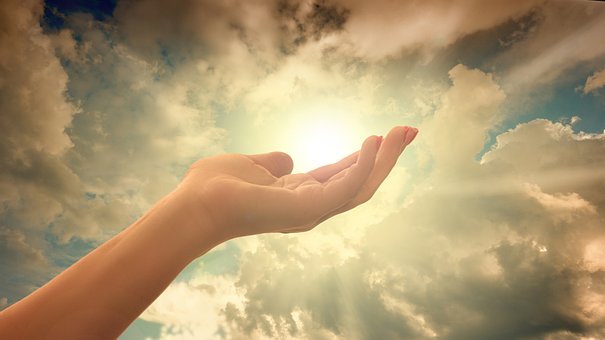“I feel, especially if I have heard a lot of music, a kind of concordance between colors, sounds and perfumes”, ETA Hoffmann. All, to a greater or lesser degree, we are synesthetes. Who, hearing a certain song of youth, has not revived an atmosphere, some images, some memories, even some smells, a touch and some emotions brought from the past? Who listening to Gregorian chant has not brought to mind images of churches and convents, the light filtered through the stained glass windows or the smell of incense?
We can say that synesthesia is a neurophysiological phenomenona kind of figure of speech that evokes auditory, visual, gustatory, olfactory and tactile sensations, as well as the ability to associate feelings. It is linked to metaphor and is sometimes called a synesthetic metaphor. Synesthetics are born but can also be fostered culturally and developed through exercise.
Precisely next week from October 26 to 29will be developed in Granada and Alcalá la Real the VII International Congress of Synesthesia. Science and Art, in the Faculty of Fine Arts of the University of Granada and in which I will have the honor of giving the inaugural conference. This year, which marks the centenary of the Cante Jondo Contest of 1922, will deal with synesthesia in said contest.
The Cante Jondo Contest was conceived in a purely artistic environment, with notable backgrounds in painting, drawing, engraving, photography, cinema, literature, music and dance. It meant a before and after in the consideration and dignity of flamenco. It was conceived as an event of total art, where the spectators participated with a special clothing, the light, the colors, the decoration of the event, the participation of the shop windows, the presentation of the acts and the smells with sedges and mastranzo carpeting the floor. Without forgetting the educational project to create a school of Cante Jondo, as well as the participation of painters such as Zuloaga, Manuel Angeles Ortiz or Hermenegildo Lanz, of composers, classical and flamenco guitarists, poets, intellectuals and the people.
The soul of this synesthesia congress and director of the Foundation Artecitta who organizes it, is the professor at the University of Granada and artist Maria Jose de Cordoba Serrano, an expert in synesthesia, a field in which she has been working since 1980, as well as research in the field of engraving and new printing materials. Her research and creative work for which she has received important awards and recognitions at the international level. She is also co-director of the congress the professor of the Polytechnic University of Milan Dina Riccò, great researcher of synesthesia. This appointment is articulated in a series of presentations, communications, posters, synesthetic auditions and exhibitions of visual music videos MuVi6.
Already Pythagoras, Plato and Aristotle musical modes and instruments were related to different feelings, to the Apollonian and the Dionysian, to popular entertainment or to courage in the army, etc., concepts that will last throughout the Middle Ages.
Charles Baudelaire he writes: “It would be truly surprising if sound could not suggest colour, if colors could not give an idea of a melody”. Let us remember Wagner with his idea of Gesamtkunstwerk, fusion of artistic disciplines (music, literature, painting, architecture and dance) to achieve a total work of art.
For his part, Claude Debussy writes: “Music is everywhere. It is not locked up in books. It is in the woods, in the rivers and in the air.” Music is for him: “Responsible for the movement of the waters, for the play of curves described by the changing breezes, nothing is more musical than a sunset!”
Rimsky-Korsakov he drew up a table of equivalences between notes and colors and Scriabin established a system of correspondences between the two spectra –sound (total chromatic) and light (twelve colours)– based on Newtonian optics and ordered according to the circle of fifths.
Saint-Saëns (1886) in The carnival of the animals, associates different timbres, melodies and rhythms to the different animals. For your part Prokofiev (1936) in his children’s play Peter and the Wolfwill identify the grandfather with the bassoon, the duck or goose with the oboe, the cat with the clarinet, the wolf with the English horn and the hunters with the kettledrums and the bass drum.
Wassily Kandissky wrote: “White sounds like a silence that can suddenly be understood.” His abstract painting is inspired by music. The discovery of the work of the composer Schönberg with his atonalism and twelve-tone tone will be of great importance, they will even work on the idea of creating an abstract puppet theater with geometric figures and colors, although they could never put it into practice.
in his essay Über das Geistige in der Kunst (On Spirituality in Art), Kandinsky (1911), refers to color and refers to Debussy, Scriabin and Schönberg, considers that: “Yellow sounds like a trumpet, light blue would correspond to a flute, dark to a cello and the darkest to the wonderful tones of the bass, cinnabar red sounds like the tuba, and violet sounds like the English horn.
For your part Oliver Messiaen exposes his idea of the relationship of color with sound and this with nature, especially with the song of birds in his work: Treat of rytme, de couleur et d’ornithologie (1949-1992)7 volumes.György Ligeti You will be fascinated by machines and optical illusions, evoking fantasy worlds, colors and sound volumes.
In Spain in literature to mention Juan Ramon Jimenez and then the Generation of 27. At present and in Granada we have the composer from Extremadura, professor at our Music Conservatory, Enlightened Perez Fruits who has various works in which he delves into the relationship between sounds and aromas, of great interest.
We are facing a hopscotch of connections of sensations and feelings, of sounds, aromas and colors, which make us a more beautiful and habitable world.

